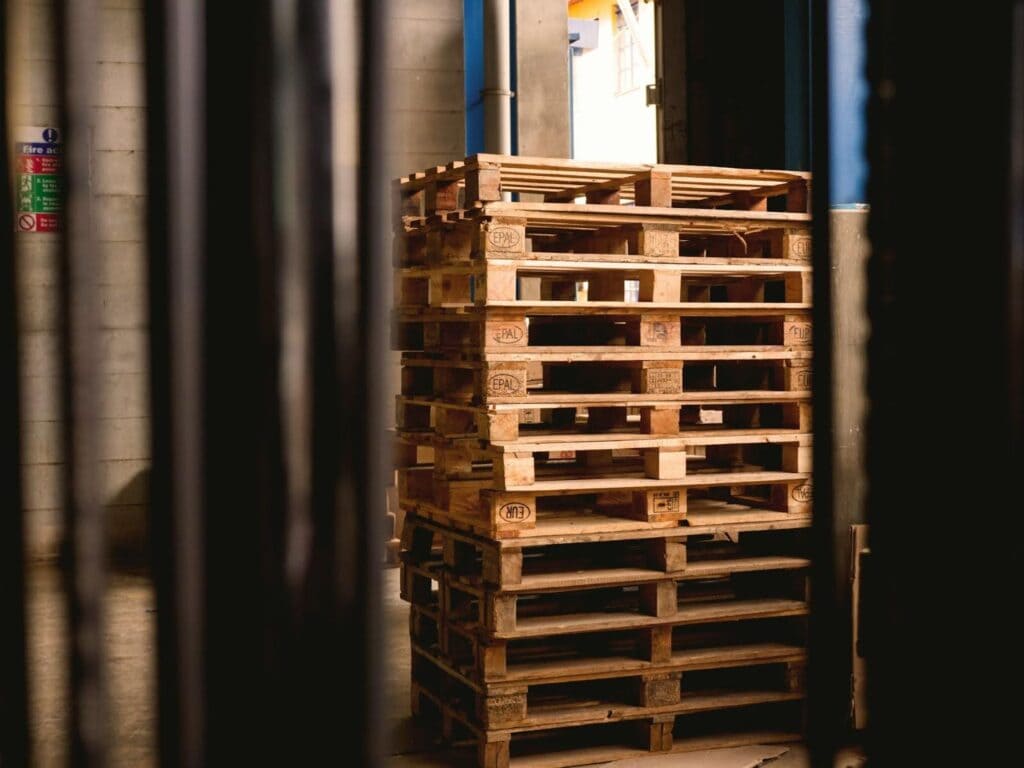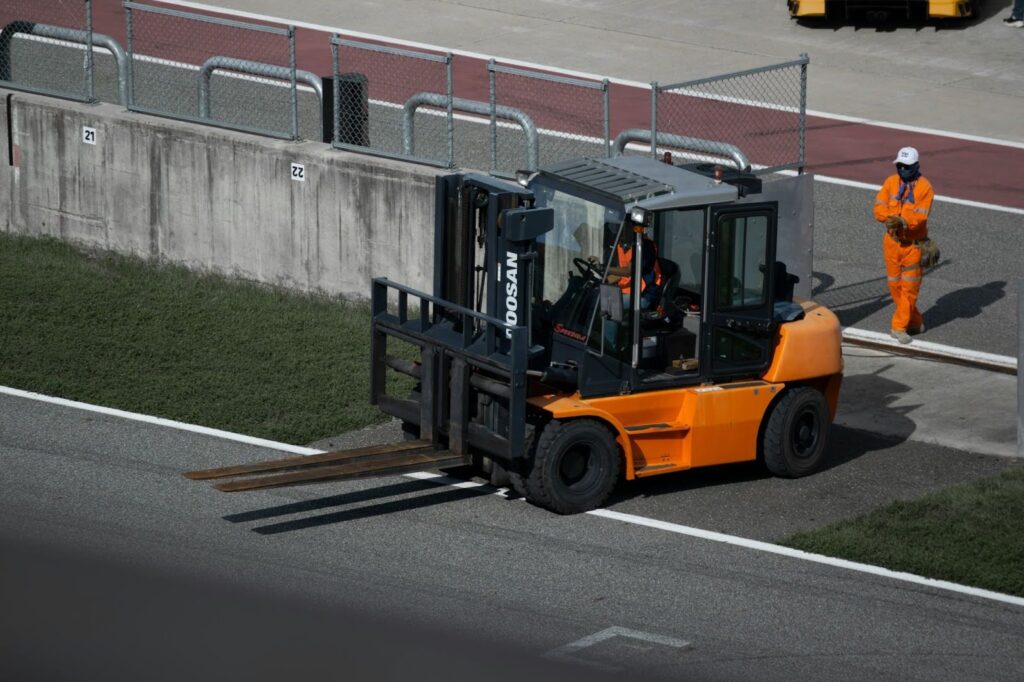Articles
Knowledge Center

Inventory Turnover Ratio: What It Is, How to Calculate and Significance
Understanding the inventory turnover ratio provides invaluable insights into a company’s operational efficiency and financial health. It measures how often a business sells and replaces its stock within a given period, offering a clear snapshot of inventory management efficiency. An optimal inventory turnover ratio measures indicates a company sells goods quickly, suggesting strong customer demand […]
Read More
What is Inventory? Definition, Types, and Challenges
Effective inventory control and management ensure that companies can meet customer demand efficiently while maintaining optimal inventory levels.
Read More
4 Types of Pallets and Their Uses
Understanding and selecting the correct type of pallet—considering factors like load capacity, compatibility with goods and handling equipment, cost-effectiveness, and compliance with international standards—is vital for optimizing operational efficiency and ensuring safe, compliant transport of goods.
Read More
Micro Warehousing: Definition, Trends, and Benefits
Micro warehousing presents both advantages and challenges. Its benefits include faster delivery, reduced shipping costs, and improved customer satisfaction. However, it also involves higher operational costs and increased complexity in inventory management.
Read More
Logistics vs. Transportation: Their Key Differences
Understanding logistics vs transportation is crucial for anyone involved in supply chain management and commercial shipping. These terms, while often used interchangeably, have distinct meanings and roles. Logistics involves the planning and coordination of transportation and distribution services, managing the supply chain, and ensuring efficient transportation of goods. Transportation, on the other hand, focuses on […]
Read More
FCL: Meaning, Importance, and Key Characteristics
Understanding FCL meaning and its significance in commercial shipping and logistics is essential for businesses engaged in international trade. By opting for FCL, businesses can enjoy cost savings, reduced handling, and greater control over their shipments.
Read More
Container Chassis: What It Is, Types, and Role in Shipping Operations
Efficient cargo transportation is very important in commercial shipping and logistics. The container chassis, which is essential in transporting containerized goods, is at the heart of this process. In this guide, we will discuss container chassis, offering a comprehensive overview of their significance and usage in commercial shipping. Understanding Container Chassis Container chassis are specialized […]
Read More
Assembly Line: Definition, History, and Advantages
Assembly lines are the backbone of modern manufacturing, revolutionizing how we produce everything from cars to consumer electronics. Why is and why was the assembly line important? They enable manufacturers to assemble complex products efficiently, drastically transforming traditional production methods. By systematically adding parts at successive stations, these lines optimize time and labor, making large-scale […]
Read More
Retail Logistics: Definition, Challenges, and Best Practices
Efficient retail logistics is crucial for the success of the retail industry, ensuring that the supply chain runs smoothly and meets customer demand.
Read More
4 Types of Inventory
Understanding the various types of inventory is crucial for effective inventory management. The four basic types – raw materials, work in progress, finished goods, and MRO inventory – form the foundation of most inventory systems. Managing these efficiently ensures a smooth production process and reduces costs.
Read More
Total Cost of Ownership: Definition, How to Calculate, and Benefits
Understanding the total cost of ownership (TCO) is crucial for businesses in commercial shipping and logistics. It’s more than just the initial purchase price; TCO encompasses all costs incurred over a product’s lifecycle, including direct and indirect costs, operating costs, and maintenance expenses. In the logistics sector, accurately calculating TCO helps businesses assess the full […]
Read More
What is Urban Logistics? Definition, Challenges, and Strategies
Did you ever wonder how your online order reaches your doorstep so quickly in a bustling city? Urban logistics, the backbone of city logistics and supply chain management, holds the answer. It’s a critical component in modern urban planning, ensuring smooth delivery operations in densely populated city centers. In urban areas, optimizing logistics operations is […]
Read More
LTL Shipping: What It Is, Key Features, and Advantages
By leveraging LTL shipping and staying abreast of industry innovations, businesses can maintain a competitive edge in the global logistics market.
Read More
Bill of Lading vs. Packing Slip: Their Key Differences
In shipping and logistics, it’s crucial to distinguish between a bill of lading and a packing slip. This article examines the differences.
Read More
4 Types of Material Handling Equipment
Storage and handling equipment plays a crucial role in warehousing for categorizing and storing products, which supports efficient operations. Read on to understand the four major types of storage and handling equipment.
Read More
Blockchain in Logistics: Definition, Role in Logistics, and Benefits
Blockchain technology is revolutionizing the logistics industry, promising enhanced transparency, efficiency, and security in supply chain operations. Blockchain in logistics ensures that all parties involved have access to validated, immutable records, thus reducing errors and increasing transparency. The blockchain technology market in the transportation and logistics industry is estimated to increase by USD 2.23 billion, […]
Read More
Supply Chain vs. Procurement: Key Differences Explained
There are critical roles and differences between supply chain and procurement within the commercial shipping industry. Understanding these functions is vital for managing operations efficiently and ensuring organizational success.
Read More
Outbound Logistics: Definition, Key Components, Benefits
Logistics is like the invisible glue that holds businesses together. It’s how companies move and manage goods from one place to another. Imagine a puzzle where each piece is a part of the supply chain, and logistics fits them together. Outbound logistics is a significant part of this puzzle. It’s all about getting products from […]
Read More
What is a Counterbalance Forklift? Definition, Types, and Uses
Counterbalance forklifts are vital machines in commercial shipping, offering versatility and efficiency in handling heavy loads. Whether using an electric forklift for indoor applications or a diesel-powered model for outdoor tasks, these forklifts are designed to meet various operational needs.
Read More
LCL: Meaning, Benefits, and Booking Process
Less than Container Load (LCL) is essential for global logistics, providing cost-effective and flexible shipping options for businesses with smaller cargo volumes.
Read More